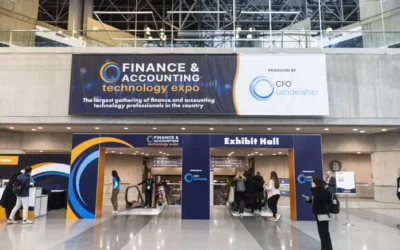The recently finalized merger guidelines from the Federal Trade Commission (FTC) and U.S. Department of Justice (DOJ) usher in the biggest changes in merger and acquisition (M&A) approval guidelines in 40 years. The changes add friction in an already uncertain business environment and create profound impacts on corporate leaders’ inorganic strategies at a time when M&A has begun showing more signs of life, pointing to renewed enthusiasm in transactions to transform their businesses.

All signs point to gradual but steady growth in M&A in 2024. A recent EY survey of U.S. CEOs shows 93% plan to execute a transaction — such as a divestiture or joint venture — within the next year, including 52% who plan to execute M&A, which are subject to the new guidelines. Transactions of any type take significant time to execute from start to finish and given the number of companies that will be impacted, now is the time for CFOs and dealmaking teams to integrate these changes into their growth plans.
Company leaders should not lose sleep over the new guidelines. It’s important to understand that the guidelines are not binding laws but provide transparency on how regulatory agencies will review deals and they largely reflect what has already become a reality for many companies seeking merger clearance over the last six to 12 months. CFOs and dealmakers should act quickly to stay competitive and work with their boards to ensure readiness for the changes. Here are three proactive steps chief financial executives can execute to stay competitive in the shifting regulatory environment.
1. Make the Anticompetitive Case Early
Under the current U.S. Hart-Scott-Rodino Act (HSR) filing requirements (for which updates are forthcoming), all M&A deals above $111 million must submit a pre-merger filing, which may be followed by a second request from the DOJ or FTC for more information.
However, under the new merger guidelines, the threshold to trigger a presumption that a merger will create an anticompetitive situation is lower. For example, companies with a 30% or higher market share in horizontal mergers in their relevant markets, or a 50% or higher market share in vertical mergers, will need to tread carefully as antitrust agencies will consider any transaction that increases these shares to materially limit competition.
The stricter thresholds shift the burden to companies by requiring them to demonstrate, through persuasive economic analyses, that the merger would not be anti-competitive. Leaders will need to be diligent in their documentation, including information that demonstrates how and why the merger will not be anti-competitive so that regulators can make faster decisions.
2. Start Planning Sooner
In combination with the yet-finalized new HSR filing requirements (expected in the summer of 2024), most deals will likely take at least four times as long on average to complete under the changes. The FTC estimates the time required to prepare a filing will increase from 30 to 40 hours to over 220 hours, but even this may be an underestimate.
In response to these changes, dealmaking teams will need to account for additional time in their deals and begin building them sooner. In conversations with CFOs and dealmakers, we’re recommending they start by making internal processes more efficient and performing up-front economic analyses to determine the antitrust risk to avoid delays. Deal teams should model deal integration scenarios and resulting synergies from various divestiture, behavioral, and structural remedy choices and be prepared to identify what they would offer up for negotiation if needed. Companies are advised to prepare for higher costs of execution to avoid unpleasant economic surprises later in the deal cycle.
3. Prepare to Collect and Disclose More Data
Corporate deal teams should prepare for greater up-front data requirements and economic analyses, deeper scrutiny of roll-up transactions, and a focus on innovation and data implications. Companies can begin to develop processes to navigate the evolving antitrust landscape effectively to help avoid delays, requests for additional information, and even application rejection and deal failure, which could lead to stock price drops, deal-breakage fees, and executives’ resignations.
In fact, larger and more complex deals, which already have been subject to significant scrutiny and filing of information through the regulators’ second request process and already conduct substantial economic antitrust analyses, may not be impacted as much as smaller deals that traditionally were not thought to be subject to such antitrust scrutiny.
Dealmaking teams now need to provide narrative descriptions of the rationale for the deal, horizontal overlaps, supply agreements and relationships, labor markets, and workforce information.
Take Action Now to Prepare for What’s Ahead
The changing regulatory landscape can be daunting, but with proper preparation and discipline, CFOs and M&A leaders are still well-positioned to take bold actions to achieve their inorganic growth ambitions. M&A remains the fastest avenue to transformation, and those who quickly adjust their strategies in response to additional regulatory scrutiny will emerge in better positions to continue their companies’ transformation journeys.
Mitch Berlin is EY Americas vice chair – strategy and transactions.
The views reflected in this article are the views of the author and do not necessarily reflect the views of Ernst & Young LLP or other members of the global EY organization.





